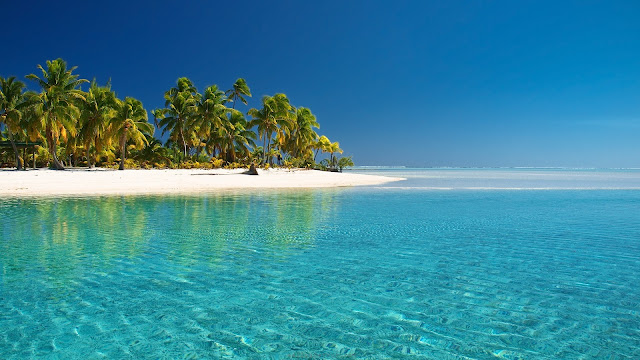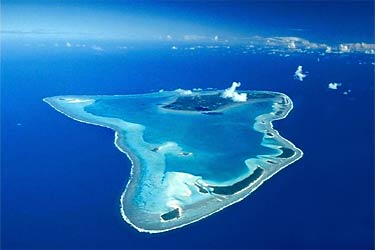Getting Started
Enjoy Slow Life with Nature Aquarium Enjoying the underwater world in your own space is one of the wonderful dynamics of the Nature Aquarium Densely planted aquatic plants growing and colorful fish swimming about are a sight to behold. Even in a small aquarium you can find the drama of nature. Just imagine aquatic plants producing tiny bubbles of oxygen and fish swimming gracefully. The nature captured within the glass is full of life, and it soothes your mind and calms your heart.
It is so beautiful to look at life underwater. The aquatic plants sway and the fish swims gracefully inside the Nature Aquarium. One may think it is difficult to produce such a layout, but anyone can make a wonderful aquarium layout, by following the instructions.
Let's all start a Nature Aquarium together.
Fertilization From The Substrate 1. The first layer of a planted aquarium substrate consists of POWER SAND. It is composed of granules of porous volcanic rock, nutrients and peat.
POWER SAND has three fundamental functions:
. Ensures a good circulation of water through the substrate.
. Carries oxygen to plant roots.
. Provides the ideal conditions for bacterial activity.
|
|
| | 2. | The fertilizing substrate materials are made of natural soils rich in macro-nutrients and trace elements.
There are three formulations: the most fertile is AMAZONIA, followed by MALAYA and AFRICANA.
. They don't need to be rinsed.
. They don't need to be siphoned.
. As they reduce the hardness of water and acidify it significantly, we recommend to mix tap water with osmosis water. The hardness of tap water is variable. We advise values of 3-4 KH and 6-8 GH. | | | 3. | In aquariums in which the substrate has completely lost its fertilizing power (after around 24 months, depending on plants species and quantities), or in aquariums having an inert substrate (SAND SERIES), it is fundamental to use fertilizing sticks, which constantly provide nutrients by releasing themselves slowly.
There are two formulations of sticks: IRON BOTTOM which is made of macro-nutrients covered with trace elements, in particular iron, and MULTI BOTTOM made of macro-nutrients covered with trace elements, iron, manganese, copper, zinc, molybdenum and boron.
Use: insert the sticks deeply into the substrate next to the roots (2-3 cm from the plant). One stick is enough for a surface of 15 x 15 cm. | |
| |
|
|
|
|
Preparation From The Substrate | 1. | Distribute evenly 1-2 cm of POWER SAND on the bottom glass of the tank.
One 2l bag covers a surface of 40 x 40 cm.
N.B.: POWER SAND SPECIAL contains BACTER 100 a nd CLEAR SUPER . | | | 2. | Spread BACTER 100 on the above-mentioned layer.
Dosage: two teaspoons per each 40 x 40 cm of surface. | | 3. | In order to optimize bacterial colonization in the substrate and remove the excess nitrogenous material, we recommend using CLEAR SUPER.
Dosage: two teaspoons per each 40 x 40 cm of surface. | | 4. | For a rapid and optimum growth of the root system, we recommend introducing TOURMALINE BC.
Dosage: two teaspoons per each 40 x 40 cm of surface. | | | 5. | Finally, cover it all with AQUA SOIL giving a 4-6 cm layer in the front and a12-15 cm layer at the back.
One 9 l bag covers 45 x 45cm of surface. | | | 6. | If you want to create a simpler layout with less demanding plants, you can use, instead of AQUA SOIL, the layout sands SAND SERIES: BRIGHT SAND, RIO NEGRO SAND, SARAWAK SAND or NILE SAND.
One 8 kg bag of sand bag, well rinsed, per each 45 x 45 cm of surface. | | 7. | Once the substrate is arranged, one can start positioning woods and rocks, followed by planting in a few centimetres of water. | | 8. | It is very important to use tweezers when planting in order not to disturb the various materials of the substrate . | N.B.: It will be possible to fill up the tank with water only after arranging the substrate. To avoid disturbing the substrate, we recommend to using a plastic bag (fish bag) and letting the water run slowly out of the pipe.
| Lighting System | A good light radiation, that is to say with the proper light spectrum, is another essential and irreplaceable parameter for the realization of an ADA aquarium. For an aquarium of 90x 45 cm we recommend to use one SOLAR I with HQI ADA MH 150W; the SOLAR I must be placed about 30-50 cm from the surface of the water (depending on the tank size). | | The SOLAR I cone of light changes according to the distance of the SOLAR I from the tank. This distance depends on the kind of layout: | | 1. | At 30cm from the surface of the water, with a cone of light of 90x60, for plants with quick metabolism such as Glossostigma, Riccia, Ludwigia, Rotola, ectc. | | 2. | At 40cm from the surface of the water, with a cone of light of 100x70, for plants having disparate requirements. We advise to plant heliophilous plants in the centre and short plants as Eleocharis and E. tenellus by the sides. | | 3. | At 50cm from the surface of the water, with a cone of light of 110x80, for plants with low metabolism such as Microsorium, Bolbitis, Anubias, Cryptcorine, etc. | | We recommend limiting aquarium lighting to 5-6 hours a day during the first month and to gradually increasing to 8-10 hours per day afterwards. | | | Filtration SystemThe filter capacity (net Filter Media content) must not be lower than 5% of the tank volume. The ideal filter should have a volume of 8-10% of the water in the tank and must be provided with a pump with a delivery capacity of 8-10 times the aquarium volume. The maintenance of the filter system consists in regularly rinsing the filter materials every 2-3 months, without the need to remove them from their bags and/or containers. Use osmosis water or water from the aquarium itself.
| The filter media to use are: |
| NA CARBON |
| BIO RIO |
| BAMBOO CHARCOAL |
| PALM NET |
| BIO CUBE |
| TURMALINE F |
|
| | These materials must be set in the following order from the inflow to the outflow of the filter: | | 1. | BIO CUBE: a synthetic sponge to automatically remove the largest particles drawn by the pump. | | 2. | BAMBOO CHARCOAL: a type of inert carbon, with a very large surface area for the best bacterial colonization. | | 3. | BIO RIO is made of small grains of pumice stone, one of the most porous minerals in nature. | | 4. | TURMALINE F: a semi-precious mineral with the property of releasing important metals useful to plants and neutralizing harmful electromagnetic waves mostly generated by the filter pump. | | 5. | NA CARBON a quality activated carbon for chemical filtration that removes many polluting substances, such as colouring agents, medicines, heavy metals and proteins. It is most important to place it in the filter as soon as it become operative (aquarium layout stage). NA CARBON loses its absorbing capability after about two weeks. Once it is exhausted, it doesn't release any element and goes on performing a biological filtration action. | | 6. | PALM NET: husk of hemp palm to be inserted through the different layers of filter materials to keep them separated. It also acts as a mechanical and chemical filter reducing pH and hardness in water. The maintenance of the filter system consists in regularly rinsing the filter materials every 2-3 months, without the need to remove them from their bags and/or containers. Use osmosis water or water from the aquarium itself. |
| |
















































